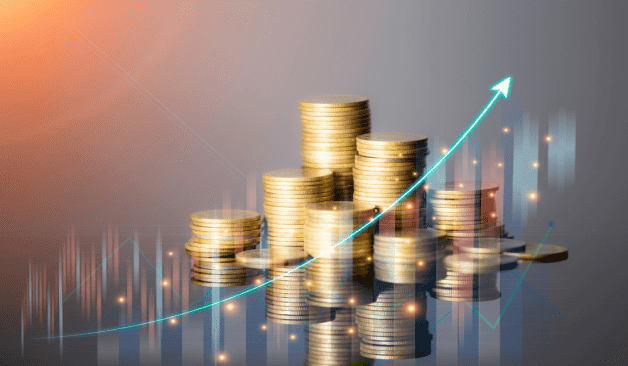
Why is the Gold Price Increasing?
Usually, gold and equity market returns have an inverse relationship - if equity delivers good positive returns, gold prices are muted. However, at present, the stock market and the gold price are at an all-time high. The price of yellow metal is not only increasing in India but across the gold. The gold prices in the US hit an all-time high above $2,250. The gold price is up 38% from its last low point in 2022. Even in India, with the start of the new financial year, the gold price has crossed a new milestone of Rs 70,000 per 10 grams in some parts of the country.
Gold price rate is increasing due to numerous elements, including speculation, central bank purchases, Fall in Dollar Index, Chinese Demand and anticipations of a U.S. interest rate decrease. In this article, our focus will be to understand why the gold prices are increasing and what will be its overall impact.
History of gold prices in India
Before we get to the details of the gold price increase, let us look at the gold prices in India over the decades. It will help you understand how the prices have increased and what to expect from the shining metal in the future.
Here is how the gold price has increased in the recent decades:
|
Year |
Average Gold Price (per 10 grams) |
|
1980 |
Rs 1,800 |
|
1990 |
Rs 3,200 |
|
2000 |
Rs 4,500 |
|
2010 |
Rs 18,500 |
|
2011 |
Rs 26,000 |
|
2012 |
Rs 31,500 |
|
2013 |
Rs 29,000 |
|
2014 |
Rs 27,500 |
|
2015 |
Rs 26,000 |
|
2016 |
Rs 28,500 |
|
2017 |
Rs 29,500 |
|
2018 |
Rs 31,000 |
|
2019 |
Rs 35,000 |
|
2020 |
Rs 49,500 |
|
2021 |
Rs 52,000 |
|
2022 |
Rs 48,500 |
|
2023 |
Rs 64,500 |
Over the last two decades, gold has given an average return of 11.2%, which is much better than the other asset classes. However, as you can see in the table above, there are a lot of lean phases. For example, between 2012 and 2018, there was no increase in the gold price. Post that the prices have been continuously increasing, and it takes us to the important question.
Gold Prices at an all-time high
Gold Prices have increased to an all-time high this month, driven by multiple factors. The Spot Gold reached a new high of $2,670.43 last week. On the other hand, in India, 24-carat gold hit a high of Rs 75,280 per 10 grams, while 22-carat skyrocketed to Rs 69,007. Let us look at different reasons for this recent surge in gold prices.
Is it a concern for India's demographic profile?
Yes, increasing gold prices can be a concern for India's demographic profile, particularly due to cultural, economic, and consumption patterns. Her e is how:
1. Cultural Impact: High Gold Demand
In India, gold has significant cultural and traditional value, particularly for weddings, festivals, and religious ceremonies. Indians buy gold as a symbol of wealth, security, and prosperity. With rising prices, the affordability of gold for lower and middle-income families diminishes, affecting their ability to maintain cultural practices.
2. Economic Impact on Savings and Investment
As gold becomes more expensive, households may be forced to shift their savings from physical gold to other financial products such as fixed deposits, mutual funds, or government schemes. However, for many conservative investors, particularly in rural areas, this transition may be slow or resisted, as gold is traditionally viewed as a safer investment.
3. Impact on Middle-Class Aspirations
Gold is often a crucial part of wedding expenses in India. Increasing gold prices raise the cost burden on families preparing for weddings, especially those in the middle and lower-income brackets. This can either reduce their gold purchases or force them to borrow money, increasing financial strain.
Why are gold prices increasing in India?
Here are some reasons for the increase in gold prices:
1. A weaker dollar boosts demand:
Gold and the US dollar often have an inverse relationship. When the US dollar weakens, it becomes cheaper for investors holding other currencies to buy gold, increasing demand and driving the prices up. The US dollar eased by 0.2% last week and the inverse relationship led to increase in gold prices.
2. Interest Rate Cut:
Lower interest rates reduce the opportunity cost of holding gold, as investors earn less interest on other assets. It can make gold more attractive as an investment. In September, the Federal Reserve did an aggressive rate cut of 50 bps which spiked the gold price.
3. Inflation Concern:
The inflation is under control in the US and also in India. However, with rate cut by Fed and RBI to follow the same path in coming months, there is a concern that inflation may increase again. Gold is seen as a hedge against inflation. As prices rise, the purchasing power of fiat currencies declines, making gold a valuable asset to preserve wealth. As a result, the demand has increased in the last week or so.
4. Geopolitical Tensions:
The ongoing conflict between Israel and Hezbollah has also added to the demand for gold. An Israeli airstrike in Beirut recently escalated fears of a full-scale war. Gold experiences increased demand during times of geopolitical instability as it is a safe-haven asset.
Also Read: How to Invest in Gold?
Impact of increase in gold prices
An increase in gold prices has a different impact on different industries. Let us look at the effect on different areas:
Consumers
- Purchasing Power: Higher gold prices may reduce the purchasing power of consumers, particularly in countries where gold is widely used in jewelry and cultural ceremonies.
- Substitution Effect: Consumers may substitute other materials or assets for gold in jewelry or other purchases if gold prices become prohibitively high.
Global Economy
- Inflation Expectations: Higher gold prices may reflect increased inflation expectations, which can have broader implications for monetary policy, interest rates, and economic growth.
- Risk Sentiment: Changes in gold prices can impact overall market sentiment and risk appetite, particularly during periods of economic uncertainty or financial market turbulence.
Central Banks
- Reserve Management: Central banks that hold gold reserves may see an increase in the value of their reserves as gold prices rise.
- Monetary Policy: Higher gold prices may influence central banks' monetary policy decisions, particularly in countries where gold plays a significant role in the economy or monetary system.
Governments
- Export Earnings: Governments of gold-producing countries may benefit from higher gold prices through increased export earnings.
- Fiscal Policy: Higher gold prices may influence government fiscal policy decisions, such as taxation and regulation of the gold mining industry.
Impact on Indian Economy
Below are the effects of an increase in gold price on the Indian economy:
Current Account Deficit (CAD):
India is one of the largest importers of gold in the world. When gold prices rise, the value of gold imports increases, leading to a widening of the current account deficit. A higher CAD puts pressure on the country's balance of payments and can lead to the depreciation of the domestic currency.
Import Bill:
Higher gold prices lead to an increase in the import bill for gold, which affects India's trade balance. The increased import bill puts pressure on foreign exchange reserves and can impact the overall stability of the economy.
Government Revenue:
The Indian government imposes import duties on gold to regulate its imports and generate revenue. An increase in gold prices leads to higher import values, which in turn results in increased revenue for the government through import duties.
Gold Loan Market:
India has a significant gold loan market, where individuals borrow money against their gold assets. An increase in gold prices can lead to higher loan values for borrowers, potentially increasing liquidity in the economy. However, it also increases the risk of default if borrowers are unable to repay their loans.
Jewelry Industry:
The Indian jewelry industry is one of the largest consumers of gold in the country. Higher gold prices can lead to increased production costs for jewelers, affecting their profit margins. It may also lead to a shift in consumer preferences towards alternative jewelry materials.
Before you go
The gold price has been on the rise. It is expected to increase further. However, it is essential to note that gold prices are influenced by a complex interplay of various factors, and prices can be volatile in response to changes in these factors. As a result, predicting gold price movements in the short term can be challenging.










